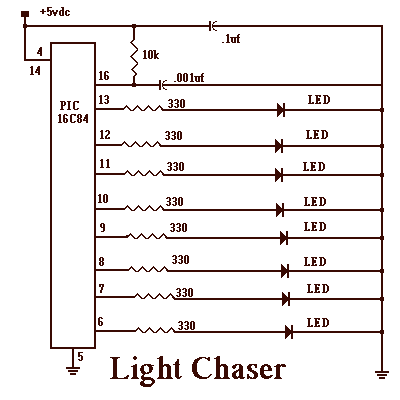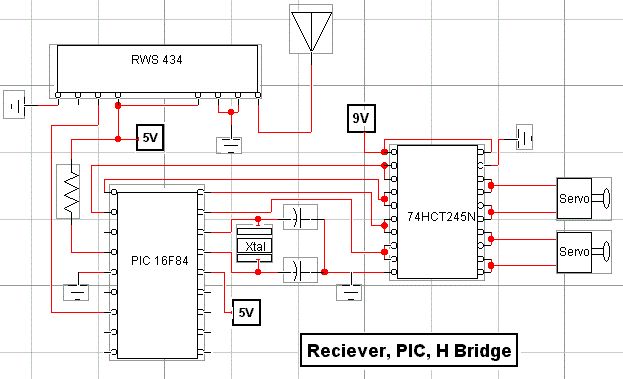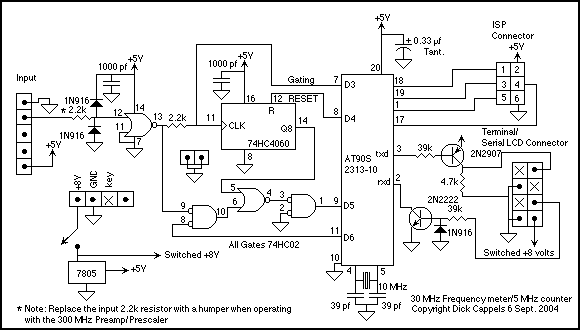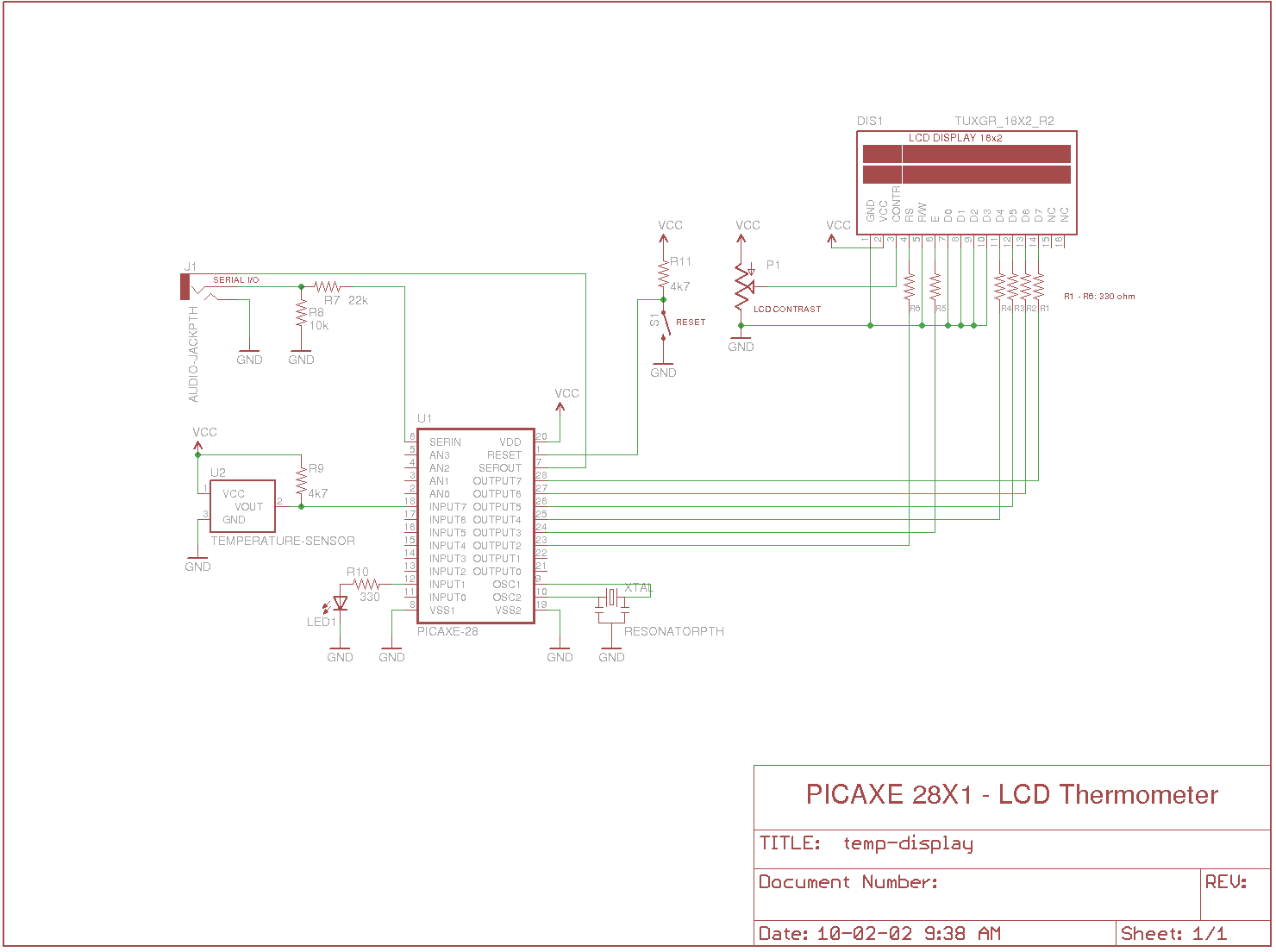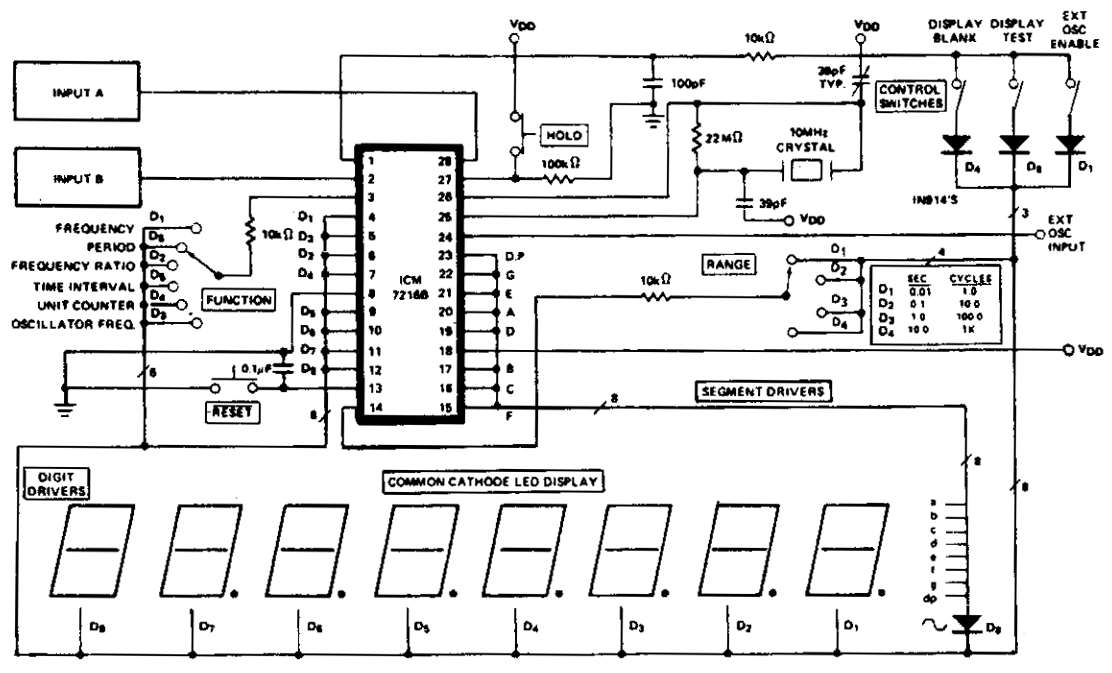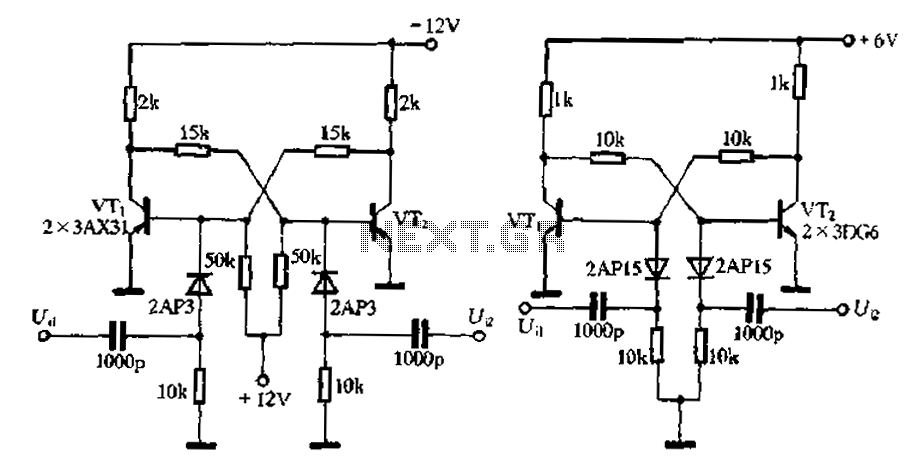
pic frequency counter
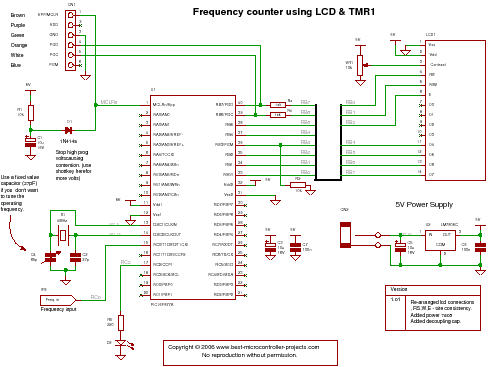
C code for a PIC frequency counter operating up to approximately 50 MHz. The project utilizes an HD47880 LCD for display purposes and employs Timer 1 to count the edges of the input signal.
This frequency counter project is designed to measure input signal frequencies up to 50 MHz, making it suitable for a variety of applications in electronics and communications. The core of the project is based on a PIC microcontroller, which is programmed using C code to accurately process the incoming signal.
The HD47880 LCD serves as the user interface, providing a clear visual representation of the measured frequency. The LCD typically operates in a 4-bit or 8-bit mode, and it is initialized and controlled through the microcontroller's GPIO pins. The display will show the frequency value in Hertz (Hz), updating in real-time as the input frequency changes.
Timer 1 of the PIC microcontroller is configured in capture mode, which allows it to count the rising or falling edges of the input signal. This timer is crucial for accurately measuring the frequency, as it can record the time intervals between successive edges. The microcontroller's firmware will calculate the frequency by counting the number of edges detected within a defined time period and then converting that count into a frequency value.
To ensure proper operation, the input signal must be conditioned if necessary, such as through signal amplification or filtering, to maintain signal integrity and avoid false triggering. The design may also include a debounce mechanism to filter out noise and ensure that only valid edges are counted.
Overall, this frequency counter represents a practical application of microcontroller technology in measuring and displaying high-frequency signals, with potential uses in testing and troubleshooting electronic circuits.and C code for a PIC frequency counter operating up to about 50MHz. The project uses an HD47880 LCD for the display and uses timer 1 to count edges of the input signal.. 🔗 External reference
This frequency counter project is designed to measure input signal frequencies up to 50 MHz, making it suitable for a variety of applications in electronics and communications. The core of the project is based on a PIC microcontroller, which is programmed using C code to accurately process the incoming signal.
The HD47880 LCD serves as the user interface, providing a clear visual representation of the measured frequency. The LCD typically operates in a 4-bit or 8-bit mode, and it is initialized and controlled through the microcontroller's GPIO pins. The display will show the frequency value in Hertz (Hz), updating in real-time as the input frequency changes.
Timer 1 of the PIC microcontroller is configured in capture mode, which allows it to count the rising or falling edges of the input signal. This timer is crucial for accurately measuring the frequency, as it can record the time intervals between successive edges. The microcontroller's firmware will calculate the frequency by counting the number of edges detected within a defined time period and then converting that count into a frequency value.
To ensure proper operation, the input signal must be conditioned if necessary, such as through signal amplification or filtering, to maintain signal integrity and avoid false triggering. The design may also include a debounce mechanism to filter out noise and ensure that only valid edges are counted.
Overall, this frequency counter represents a practical application of microcontroller technology in measuring and displaying high-frequency signals, with potential uses in testing and troubleshooting electronic circuits.and C code for a PIC frequency counter operating up to about 50MHz. The project uses an HD47880 LCD for the display and uses timer 1 to count edges of the input signal.. 🔗 External reference
Warning: include(partials/cookie-banner.php): Failed to open stream: Permission denied in /var/www/html/nextgr/view-circuit.php on line 713
Warning: include(): Failed opening 'partials/cookie-banner.php' for inclusion (include_path='.:/usr/share/php') in /var/www/html/nextgr/view-circuit.php on line 713
